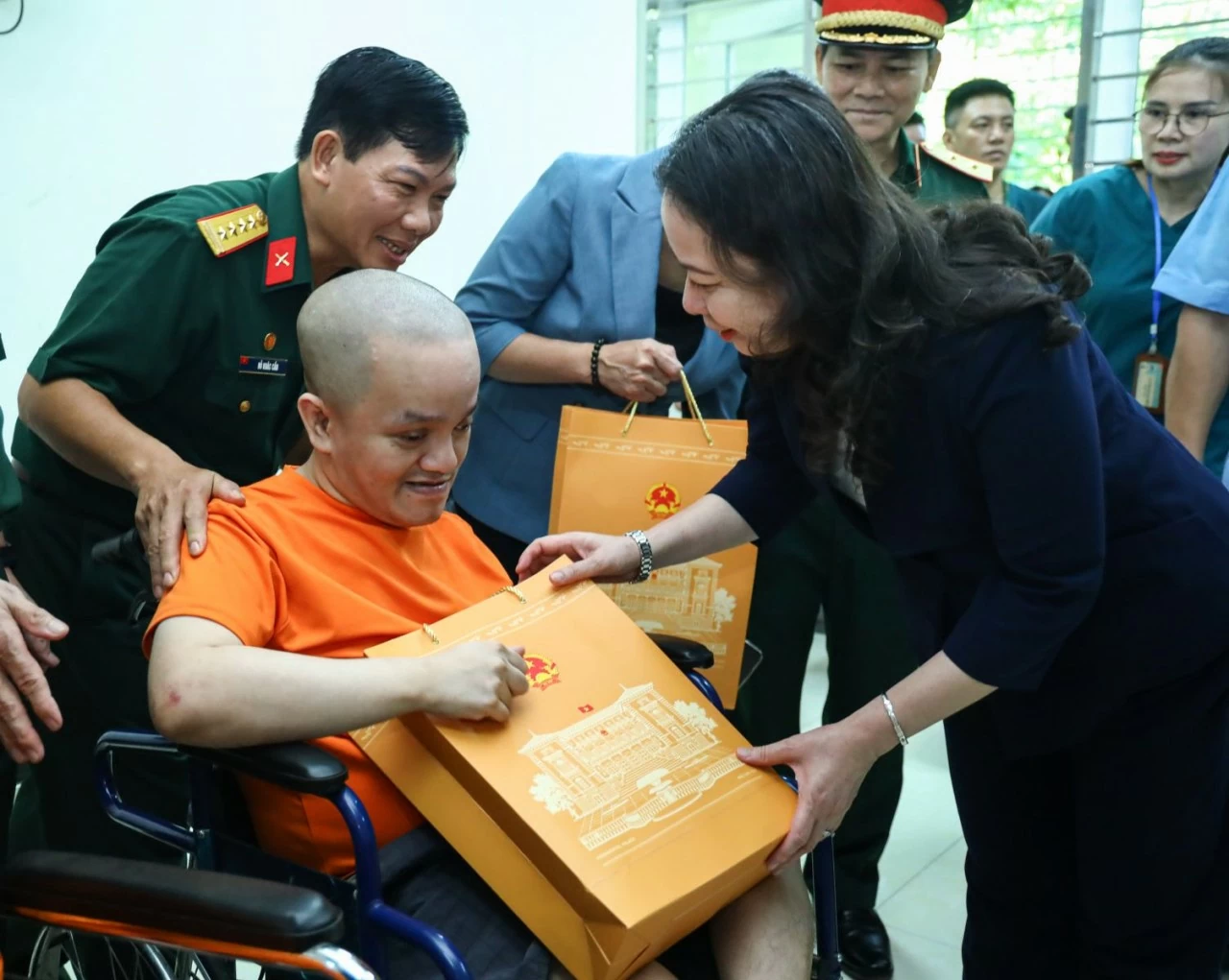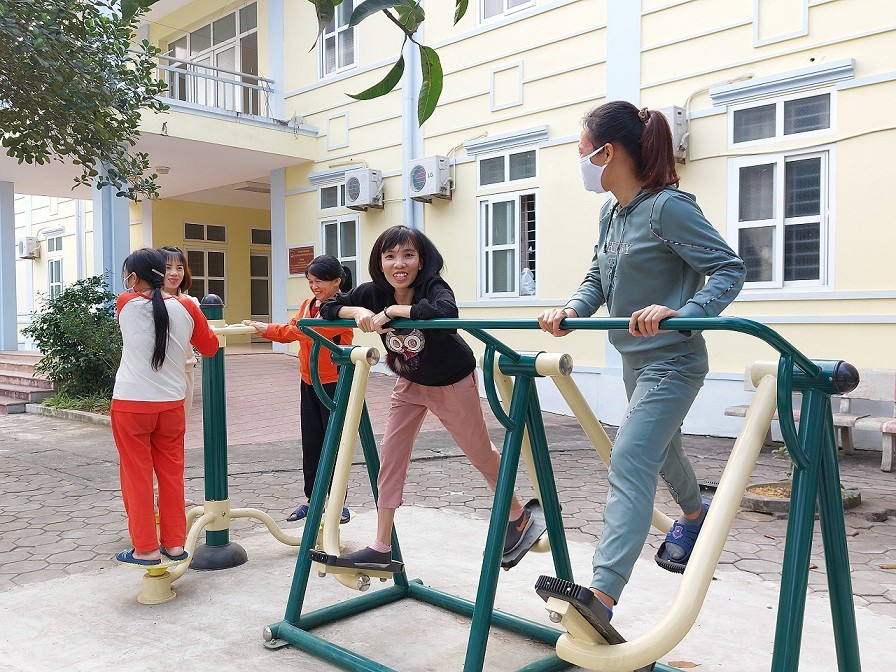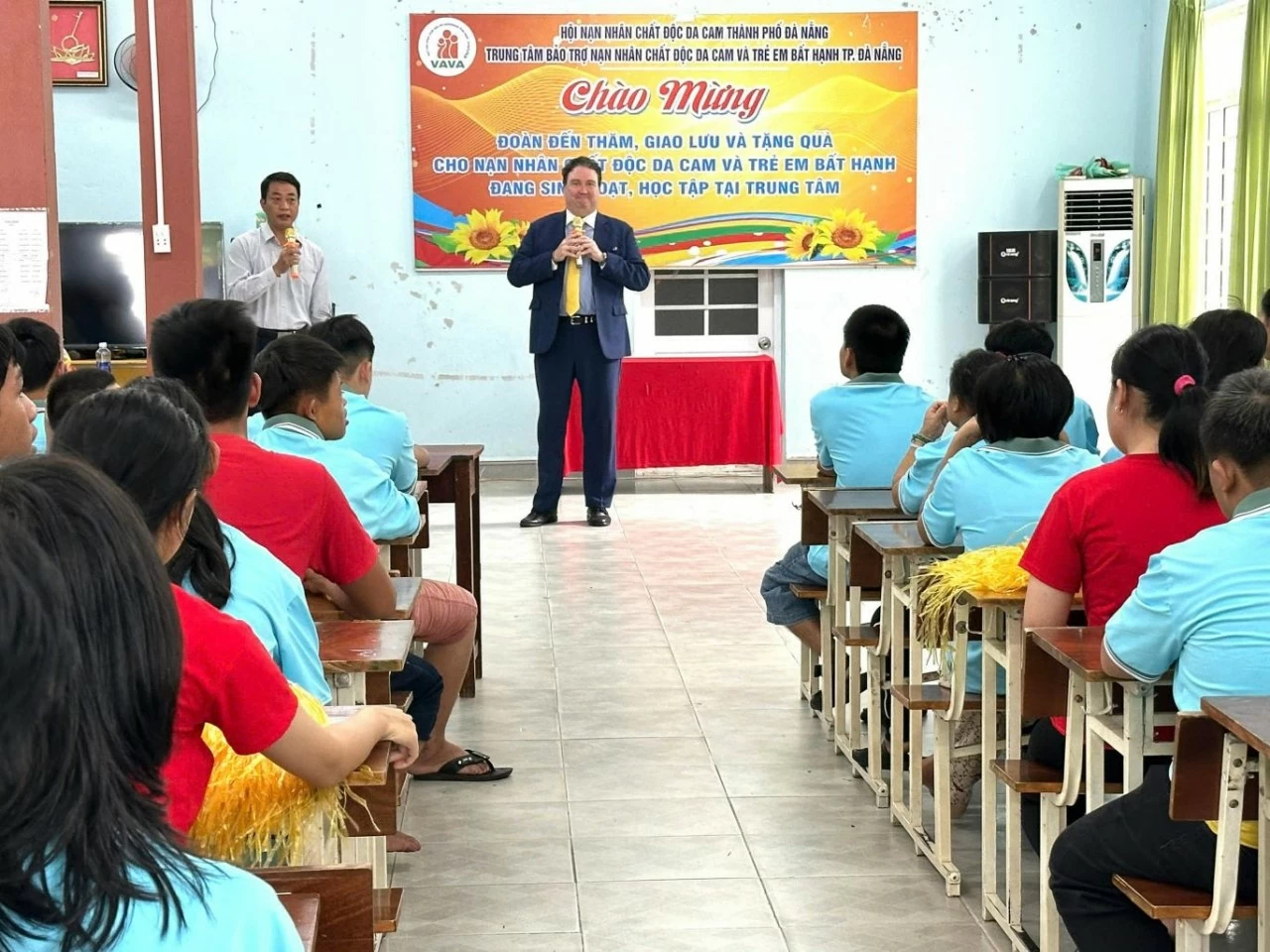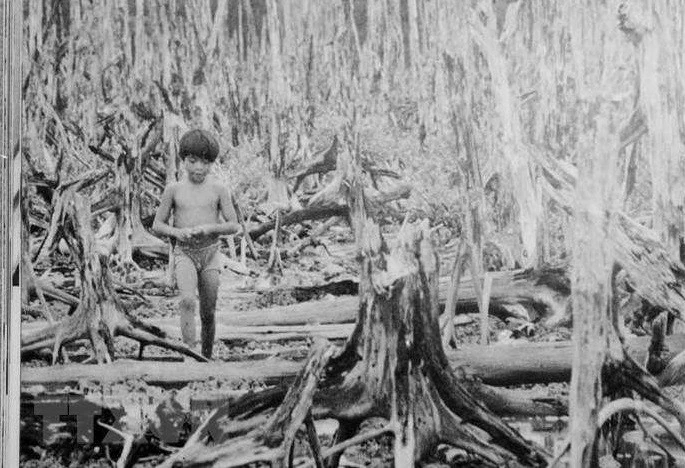
Ensuring the rights of Agent Orange victims
Latest
Every day, hundreds of thousands of people suffer from the devastating mental and physical effects of the defoliant. Their human rights are often jeopardized as they struggle with the challenges of daily life.
 |
| Vice President Vo Thi Anh Xuan visits and presents gifts to the Care and Treatment Center for Agent Orange/Dioxin Victims in Hanoi on August 10, 2024. (Photo: Office of the President) |
Severe consequences
Dioxin, a highly toxic chemical compound found in Agent Orange, inflicts irreversible damage on the human body, including reproductive disorders, compromised immune systems, hormonal imbalances, and cancer. For generations of Vietnamese, the consequences of this chemical have been passed down, with entire families bearing the burden of its genetic impacts.
Those directly exposed to Agent Orange, or born into families affected by dioxin exposure, frequently live with severe disabilities. Their nervous systems are often underdeveloped, leaving them with defects such as missing limbs, malformed spines, and cognitive impairments.
On February 20, 2008, the Ministry of Health issued Circular 09/2008/QD-BYT, which outlines 17 disabilities associated with dioxin poisoning. These include cancer, reproductive disorders, limb deformities, and mental health conditions. According to the Ministry, thousands have lost their lives to Agent Orange, and many children continue to be born with disabilities caused by the toxin. However, the latent effects of dioxin exposure often take years to manifest, making medical intervention nearly impossible by the time symptoms become apparent.
Agent Orange severely restricts victims’ right to maintain their families. Many couples have lost the opportunity to become parents due to secondary infertility or pregnancy complications such as miscarriages, stillbirths, or abnormal fetal development. This chemical wreaks havoc on the genetic makeup of individuals, causing birth defects that leave children physically and mentally impaired. As a result, many affected families have chosen to stop having children out of fear for their offspring’s health. The fundamental right to bear and raise children is thus taken away from them.
 |
| The "Orange Girls" at the Social Protection Center for Agent Orange/Dioxin Victims in Thach That District, Hanoi. (Photo: Social Protection Center) |
Dioxin poisoning indirectly deprives victims of other rights as well, such as the right to education, political participation, and employment. Due to physical and mental disabilities, many victims are unable to attend school, work, or engage in normal social activities. Some suffer from severe cognitive impairments, lack self-awareness, or have missing or deformed limbs, leaving them dependent on others for daily care. Their opportunities for education, employment, and social integration are drastically limited.
Moreover, many victims lack the civil capacity to participate in community activities, and their understanding of societal issues is restricted. As a result, they face barriers to exercising political rights, such as voting or running for office, and their chances of finding employment are significantly reduced.
Agent Orange victims place an additional burden on society. These challenges include providing adequate healthcare, social security, and insurance coverage for the victims. Most families affected by Agent Orange live in poverty, with many classified as low-income or near-poor households. Their incomes are often unstable, with most of their earnings going toward medical expenses. In reality, the primary source of income for many families is social welfare and community support.
The effects of Agent Orange/Dioxin have not been limited to the first generation; tragically, the impact has now extended to the fourth generation. Many children, grandchildren, and great-grandchildren of victims are born with severe deformities, congenital disabilities, or are in a vegetative state.
According to data from the Vietnam Association for Victims of Agent Orange/Dioxin (VAVA) in 2022, the country currently has over 150,000 second-generation victims (children), 35,000 third-generation victims (grandchildren), and around 6,000 fourth-generation victims (great-grandchildren). In surveys conducted in several southern provinces, 23.7% of respondents reported having 1 to 3 children with disabilities, and 5.7% reported having disabled grandchildren. The cancer rate among the victims is 14.9%, with most cases occurring in those over 50 years old.
 |
| U.S. Ambassador to Vietnam Marc Knapper visits and presents gifts to Agent Orange victims in Da Nang on September 6, 2024. (Photo: VAVA) |
Supporting for Agent Orange victims
In recent years, the Party and Government have prioritized assisting victims of Agent Orange/dioxin, helping to ease their burdens.
Several policies have been implemented, notably Directive No. 43-CT/TW on May 14, 2015, which enhances the Party's leadership in addressing the aftermath of chemical warfare and ensuring human rights. These efforts aim to minimize negative impacts and protect the legitimate rights and interests of Agent Orange victims.
Since 2004, the VAVA has raised over VND 4.049 trillion, with more than VND 4.023 trillion allocated to assist victims. In the first half of 2024 alone, more than VND 348 billion was raised, with over VND 320 billion spent on victim support.
In 2023, the program "Joining Hands to Alleviate Orange Pain" raised more than VND 2 billion, with over VND 1.6 billion distributed to build 14 new houses and provide direct assistance to nearly 600 victims across 22 provinces and cities. Funds also went to supporting victims at the Social Welfare Center of the Central Association, totalling over VND 140 million.
| Each year, the Vietnamese Government allocates over VND 10 trillion from the national budget for monthly allowances to victims of Agent Orange/dioxin. Currently, more than 320,000 individuals who have been exposed to this chemical, along with their offspring affected by it, benefit from preferential policies granted to those recognized for their revolutionary contributions. These families also receive health insurance and free medical treatment, alleviating some of the financial and health-related burdens. |
Each year, thousands of severely disabled individuals, including Agent Orange victims, receive rehabilitation services. Tens of thousands of disabled children, many of whom suffer from the indirect effects of Agent Orange, attend specialized or integrated schools. Initiatives such as the 12 Peace Villages and Friendship Villages nurture thousands of children with deformities caused by Agent Orange exposure. Centers for Reproductive Health counseling in Hanoi and Ho Chi Minh City also work diligently to reduce the rate of birth defects.
Healthcare for Agent Orange victims involves various forms of support, including special allowances, medical exams, rehabilitation, and detoxification treatments. Additional efforts include building or repairing homes, offering scholarships, and giving gifts to victims. Thanks to the combined efforts of society, the physical and mental suffering of Agent Orange victims has been somewhat alleviated.
However, ensuring the rights of Agent Orange victims still faces many challenges. These victims, being a vulnerable group, face numerous obstacles. There is a lack of consistency in policy implementation between local authorities and government bodies. In some areas, the mobilization of social resources is insufficient, failing to meet the local potential. Additionally, there remains a significant portion of the population that is unaware of the gravity of the issue, with some showing indifference or even discrimination towards the victims
First, is to raise awareness It is crucial to enhance awareness and accountability among organizations and individuals about the importance of protecting the rights of Agent Orange victims. Media campaigns should be intensified, targeting not only domestic audiences but also overseas Vietnamese communities. These campaigns should emphasize the Party and Government’s policies for Agent Orange victims, highlighting their struggles to encourage collective efforts to ease their pain.
 |
| Art exchange program "Lighting the Future" commemorates 63 years since the Agent Orange disaster in Vietnam. (Photo: Dieu Linh) |
Second, effective policy implementation. Strengthening the implementation of key policies, such as Directive No. 43-CT/TW and Decision No. 2215/QD-TTg (National Action Plan on Overcoming the Aftermath of Chemical Weapons/ Dioxin for 2021-2030), is essential. These policies must be integrated into annual socio-economic development plans to ensure the long-term improvement of victims' lives.
The third is mobilizing resources. Social organizations, especially the VAVA, should play a more active role in representing and protecting victims' rights. Efforts should be made to strengthen coordination between these associations and other social-political organizations, as well as to attract support from businesses, philanthropists, and individuals to create resources for promoting the victims' human rights.
The fourth is to enhance healthcare. Expanding healthcare services, such as consultation, diagnosis, and treatment for diseases related to Agent Orange, is vital. Comprehensive health monitoring, early detection of related illnesses, and rehabilitation services must be made available at hospitals and nursing centers, as well as in-home care, where needed.
Lastly, a goal is to pursue justice. Vietnam must persist in seeking justice for Agent Orange victims to make the world more aware of the severe consequences of the war and the physical and mental suffering that victims endure. This would help garner greater international empathy and support.
According to data from the Ministry of National Defense, approximately 4.8 million Vietnamese were exposed to Agent Orange, with 3 million being direct victims. Hundreds of thousands have already lost their lives due to this toxic chemical, while successive generations continue to bear the consequences of dioxin exposure, enduring daily physical and emotional pain. |














